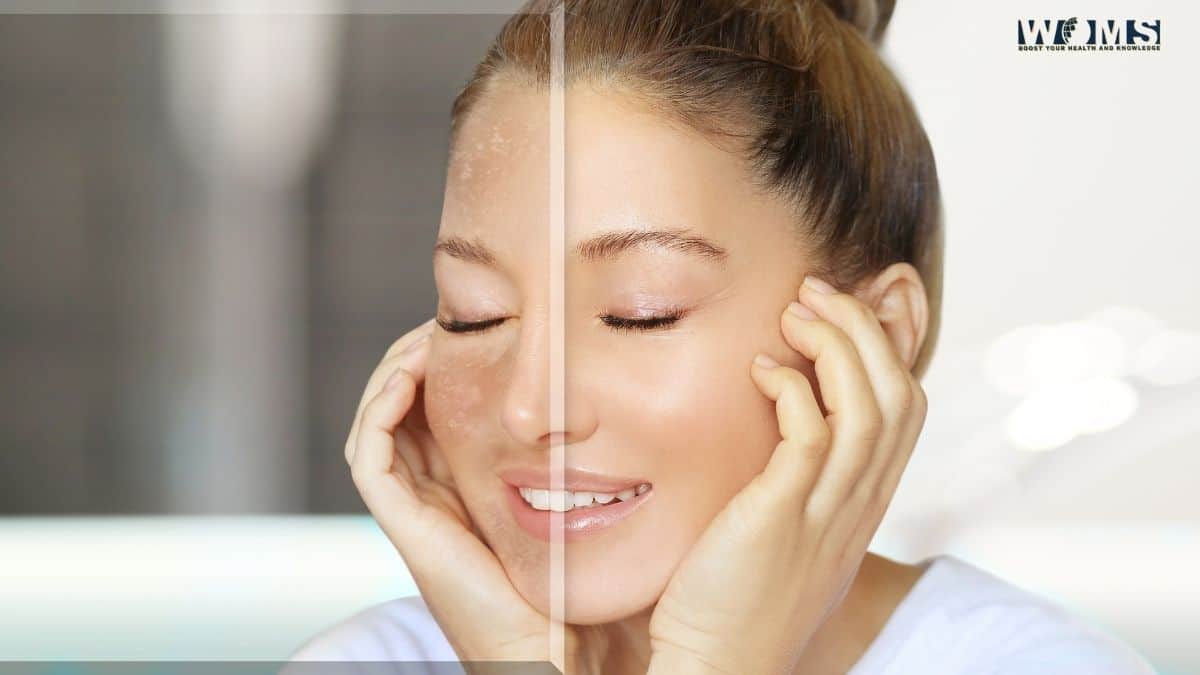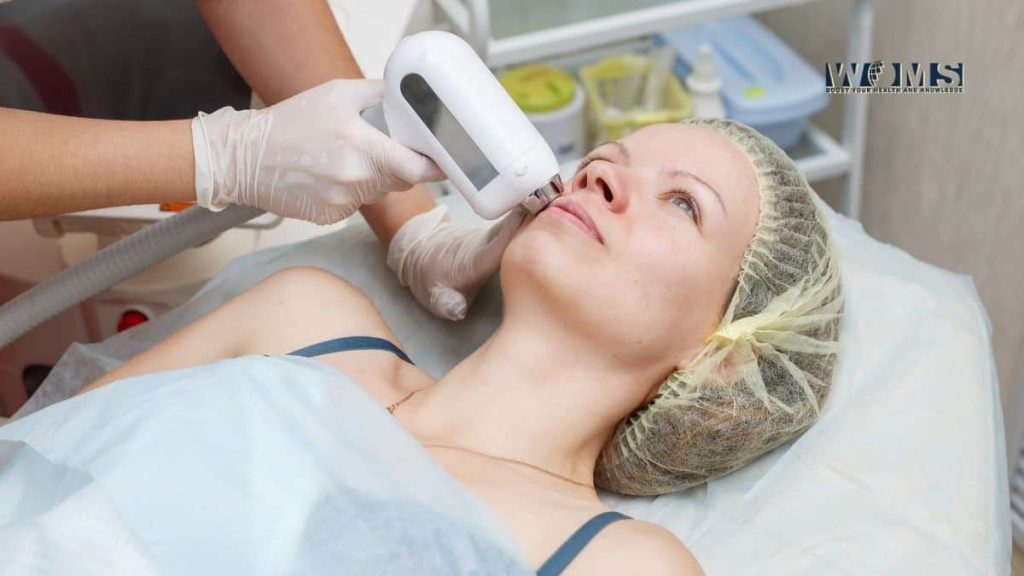Darker Skin On Your Upper Lip? You May Have Melasma

Are you spending more time out and about in the summer sunshine? Have you noticed that your upper lip area is slightly darker than the rest of your facial skin? There’s good news if your answer is yes! If this patch of skin gets darker the more time you spend in the sun, then you may have melasma.
Why is this good news? Well, even though melasma cannot be entirely treated, it is possible to fade the pigmentation that arises with melasma. With preventative measures being taken to reduce the chance of flair-ups, you will be able to manage your melasma for the rest of your life. So read on to find out if you have melasma and what melasma treatments are available.
What Is Melasma?
So, what is Melasma? it is patchy, brown hyperpigmentation on the face and neck (and sometimes the chest and arms). It is more common in females, people with darker skin tones (if you are of African, Asian, Indian, Middle Eastern, Mediterranean, or Latin American descent you have the highest chance of developing melasma), and it is often genetic.
While chronic hyperpigmentation from the harsh Australian and New Zealand sun appears as spots or freckles randomly across the skin, melasma usually presents in symmetrical patterns. It appears on different areas of the face, including the forehead, eyebrows, cheeks, chin, nasolabial folds, upper lip, earlobes or medial canthal lines. You may only develop melasma in one or some of these areas.
What Causes Melasma?
- Sun exposure: This is the main reason that people develop hyperpigmentation from melanocyte stimulation.
- Melanocytes: Melanocytes are melanin-producing neural crest-derived cells that can be found in the bottom layer (the stratum basale) of the skin’s epidermis, the middle layer of the eye (the uvea), the inner ear, vaginal epithelium, meninges, bones, and heart. High concentrations or hyper-activation creates patches of darker skin.
- Hormonal changes: Melanocytes can become over-active in the presence of hormonal changes or imbalances, including thyroid dysfunction. Similarly, menopause, birth control pills, and cosmetics affecting estrogen and progesterone have been linked to this condition. Genetics play a big role, out of all cases around 50% can be attributed to genetic history.
- Pregnancy: Sometimes called the “mask of pregnancy”, melasma can develop due to the hormonal changes brought about by pregnancy.
- Contributing diseases: Hyperpigmentation can be caused by diseases such as Addison’s, hemochromatosis, and lentigines.
Melasma Treatment Types
Melasma treatments usually include brightening and fading active ingredients, hydroquinone, topical retinoids, or chemical peels. There are also in-clinic laser and light therapies that have been shown to be safe and effective treatments.
- Laser Treatment: Lasers should be used with extreme caution to prevent post-inflammatory pigmentation (a darkening of the skin): use only very low setting Q-switched Nd: YAG lasers or fractional lasers
- Chemical Peels: Glycolic and azelaic acid peels are commonly used to treat melasma, while a tretinoin peel – known for its ability to promote cell turnover – can help other treatments better penetrate the skin.
- Light Therapy: Heat from intense-pulsed light (IPL) is used to remove pigment. However, the heat can sometimes result in post-inflammatory hyperpigmentation and a potential relapse within three months. Consult your doctor and dermatologist before taking this route.

However, over-the-counter melasma skin care products are generally ineffective, and lasers or chemical peels for melasma are an expensive way to continually remove melasma hyperpigmentation. Today you can find telehealth skincare providers who are creating personalized, prescription-only melasma treatments for their patients based on their lifestyles, and current skincare routines.
A detailed questionnaire is followed by an online video consultation with a doctor, who will diagnose your skin concerns and help you identify any triggers in your current lifestyle. A prescription-only cream base or serum is then formulated for your skin’s needs and sensitivity, which is then delivered to your door.
The Best Active Ingredients Used In Custom-Blended Melasma Treatments
Azelaic Acid: The anti-melanin properties of azelaic acid, when combined with a prescription retinoid make azelaic acid a useful topical treatment for melasma and hyperpigmentation.
Hydroquinone: Hydroquinone is the gold standard treatment for pigmentation (especially melasma) when delivered under medical care, as it reduces the formation of melanin in the skin. It inhibits the tyrosinase enzyme which is responsible for melanin production. Hydroquinone is used to lighten dark areas of skin, such as freckles, age spots, melasma, and pigmentation resulting from injury to the skin.
Tretinoin: Tretinoin is a derivative of vitamin A. It is used on the skin (topically) to treat skin damaged by excessive sun exposure. It increases the rate at which cells reach maturity and die, quickly replacing the damaged cells with new and healthy ones, free of hyperpigmentation.
Corticosteroids: You may already be familiar with this treatment. Typically, it is used in a variety of ways with the main effect being the reduction of inflammation and immune response. This is often added to treatment creams to mitigate the more extreme reactions in the body.
Managing Your Melasma This Summer
What can you do to make the most of the summer sun and ensure those troublesome dark patches don’t return? Sunscreen is one of the most overlooked products in the beauty and skincare industry. Protecting the skin from UV rays is vital, especially when you are faced with the Australian sun.
One of the best ways to manage melasma is sun avoidance, which during the summer is hard. Style large, floppy sun hat and pair them with a sunscreen that contains a physical block (either zinc oxide and/or titanium oxide). Did you know that the sun can reflect off sand and water? This means you need to be conscious of light from above and below, so don’t skip the sunscreen just because you are wearing a hat or you’re in the shade.
A broad-spectrum SPF of 30 and above should be your go-to product, and part of your daily skincare routine. Even if the weather is overcast, put on that sunscreen – UVA and UVB light cuts through cloud cover, and UVB penetrates the water.




